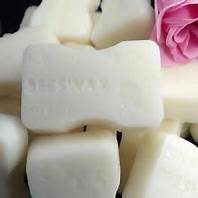Astringents














Astringents
Astringents close the pores of the skin, improving its tone and texture , making it feel firmer
.
They work by reducing the water content of the skin cells and can aid the healing of broken or inflamed skin. They can also be used to reduce tear production by inflamed or infected eyes.
They frequently sting when applied to recently shave, exfoliated, sore, or broken skin. Antiperspirants, aftershave lotions, and skin-toning lotions often contain astringents.
Commonly used astringents include sodium chloride (salt), alcohol aluminum compounds, and some plant extracts such as horsetail and witchhazel. They are used in aftershave lotions to close pores that have been opened by the shaving libricant and hot water, producing a smoother-feeling chin.
After using a cleansing lotion, which opens the pores to aid cleaning, an astringent should be applied to close them before make-up, such as foundation, is applied. This prevents the foundation from becoming trapped under the pores.
Old Wive's Tales - Herbal Astringents
Lemon balm, lavender infusion, mint, rosemary, yarrow, horsetail, nettle, red raspberry leaves, walnut leaves, sage, and witch hazel are all herbs that are said to tone and smooth skin.
Try them, some of them may work, but be careful - witch hazel, rosemary and lavender have all been linked to allergies and dermatitis, and rosemary and lavender also cause photosensitivity.
Reference: Cosmetics Unmasked:Dr Stephen & Gina Antczak
Articles-Latest
- Skin tags: Why they develop, and how to remove them
- So That’s Why Your Skin Gets Crepey As You Get Older
- Eye Infection from False Eyelashes
- Teeth stain removal and whitening solutions
- Benefits of collagen for skin
- Why vitamin E should be part of your skincare regime
- Can gray hair be reversed?
- Hair loss affects 1 in 10 women before the menopause – here’s how to treat it
- Conscious ageing and Black skin: What happens when Black does crack?
- Your skin color may affect how well a medication works for you — but the research is way behind
- The C word Cancer
- Astringents
- How does light therapy work? The science behind the popular skincare treatment
- The Most Offensive Fashion Police Criticisms of All Time
- Everything you need to know about lip filler migration, as told by the experts
- Pig semen and menstrual blood – how our ancestors perfected the art of seduction
- Everything you need to know about benzoyl peroxide
- We've bleached, relaxed, and damaged our hair to make ourselves look more white
- Will this be the year that facial filler is cancelled?
- Shock of the old: 10 painful and poisonous beauty treatments
Cosmetic ingredients
LOGIN
Who's On Line
We have 140 guests and no members online
Articles-Most Read
- Home
- White Bees Wax
- Leucidal
- Cosmetic Preservatives A-Z
- Caprylyl Glycol
- Cosmetics Unmasked - How Safe Are Colorants?
- Cosmetics Unmasked - Choosing Ingredients
- Cosmetics Unmasked - Colorants And Fragrances
- EcoSilk
- Toxic Beauty - Who's Looking At Cosmetics?
- Cosmetics Unmasked - Fragrances
- Microbes and Cosmetics
- Chemicals Lingering In The Environment
- Yellow Bees Wax
- Microbes and Safety Standards
- Potassium Sorbate
- Toxic Beauty - Hazardous To Your Health
- Synthetics In Cosmetics - The Industry Fights Back
- What's Happening in the USA - Cosmetic Regulations - Toxic Beauty
- Fresh Goat's Milk Soap
- Active Ingredients
- Cosmetics Unmasked - Listing Cosmetics
- Toxic Beauty - Cocktails and Low Doses
- Natural Waxes A-Z
- Natural Butters A-Z


